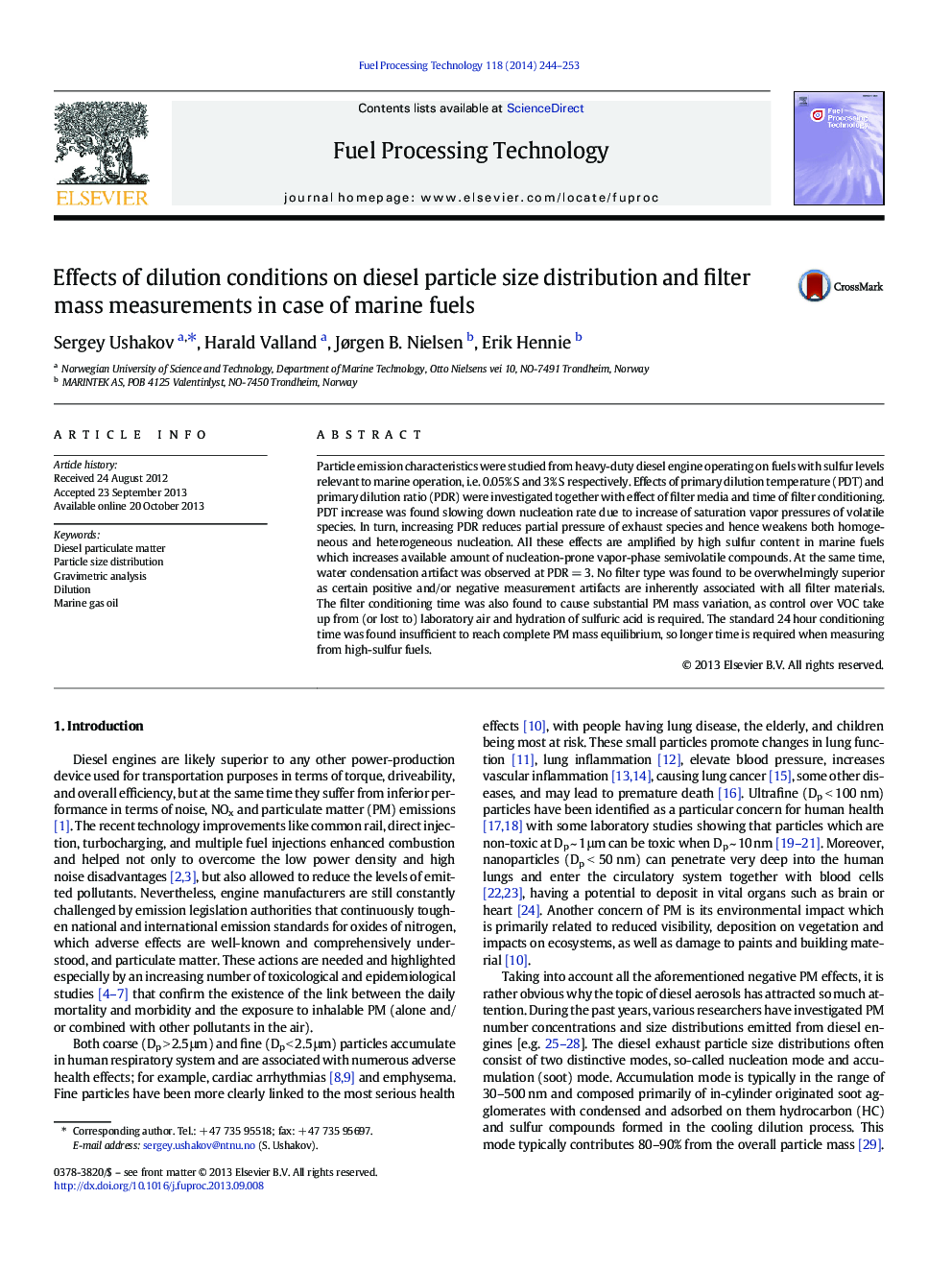| Article ID | Journal | Published Year | Pages | File Type |
|---|---|---|---|---|
| 6657301 | Fuel Processing Technology | 2014 | 10 Pages |
Abstract
Particle emission characteristics were studied from heavy-duty diesel engine operating on fuels with sulfur levels relevant to marine operation, i.e. 0.05% S and 3% S respectively. Effects of primary dilution temperature (PDT) and primary dilution ratio (PDR) were investigated together with effect of filter media and time of filter conditioning. PDT increase was found slowing down nucleation rate due to increase of saturation vapor pressures of volatile species. In turn, increasing PDR reduces partial pressure of exhaust species and hence weakens both homogeneous and heterogeneous nucleation. All these effects are amplified by high sulfur content in marine fuels which increases available amount of nucleation-prone vapor-phase semivolatile compounds. At the same time, water condensation artifact was observed at PDRÂ =Â 3. No filter type was found to be overwhelmingly superior as certain positive and/or negative measurement artifacts are inherently associated with all filter materials. The filter conditioning time was also found to cause substantial PM mass variation, as control over VOC take up from (or lost to) laboratory air and hydration of sulfuric acid is required. The standard 24Â hour conditioning time was found insufficient to reach complete PM mass equilibrium, so longer time is required when measuring from high-sulfur fuels.
Keywords
Related Topics
Physical Sciences and Engineering
Chemical Engineering
Chemical Engineering (General)
Authors
Sergey Ushakov, Harald Valland, Jørgen B. Nielsen, Erik Hennie,
